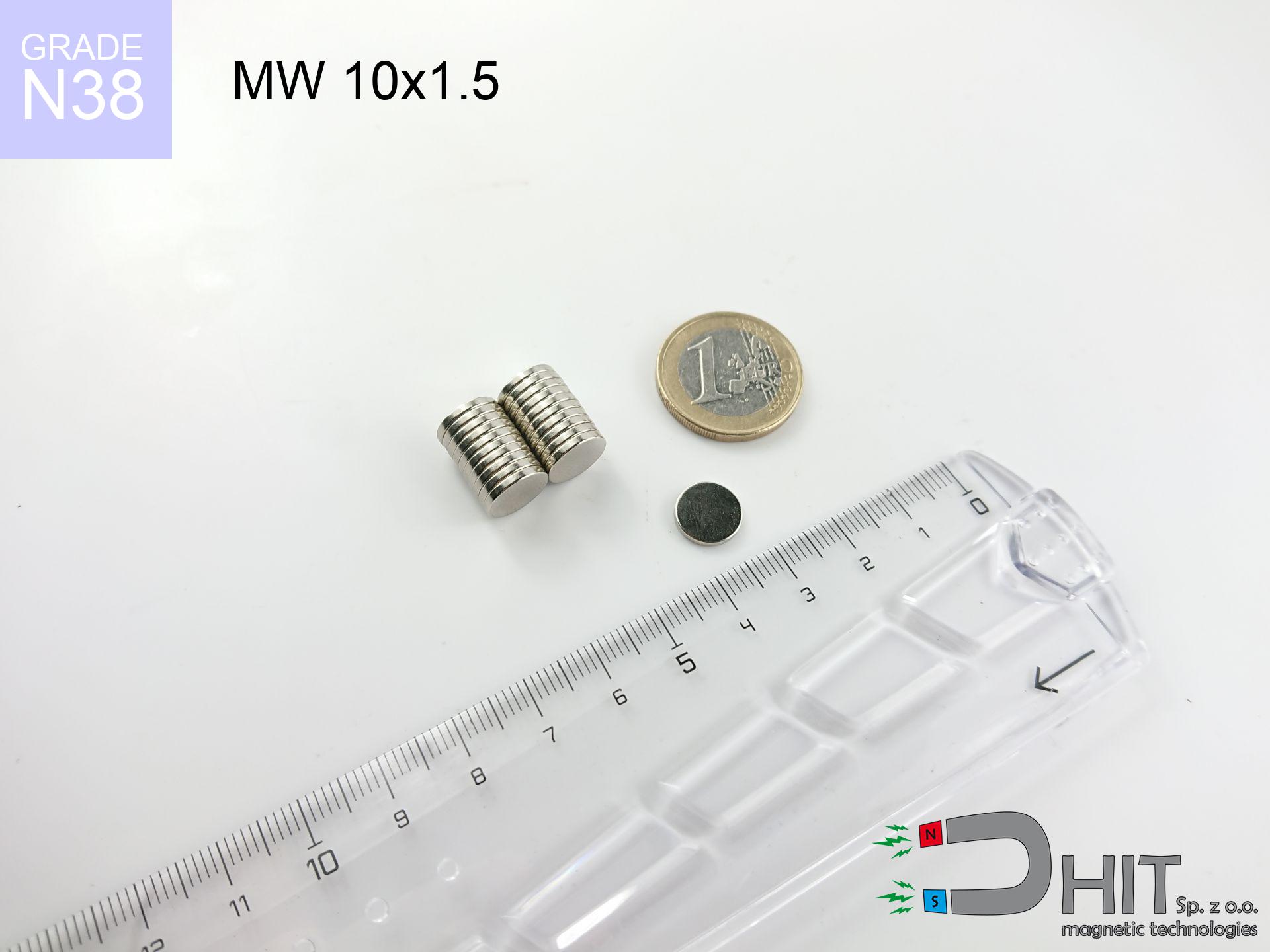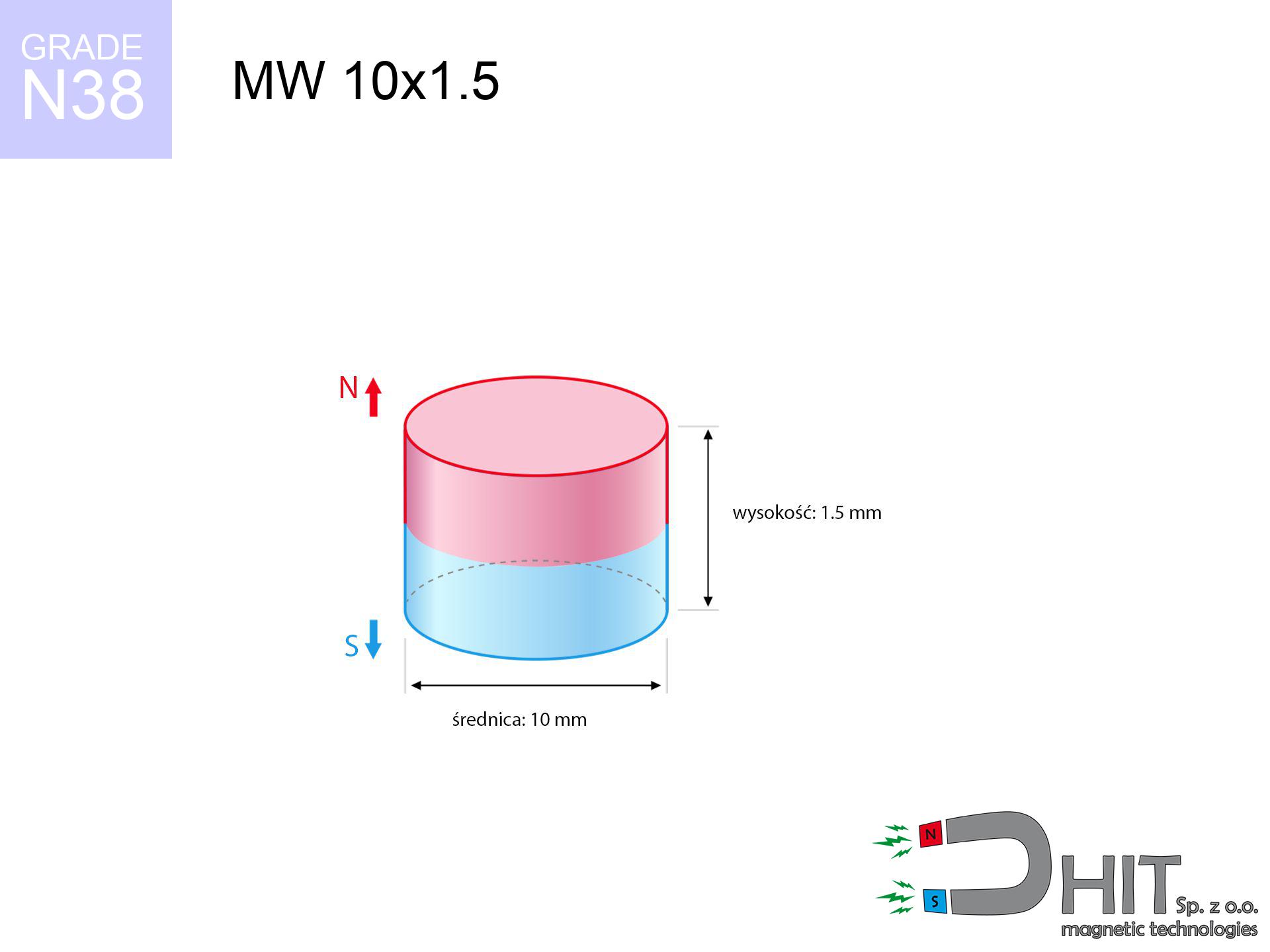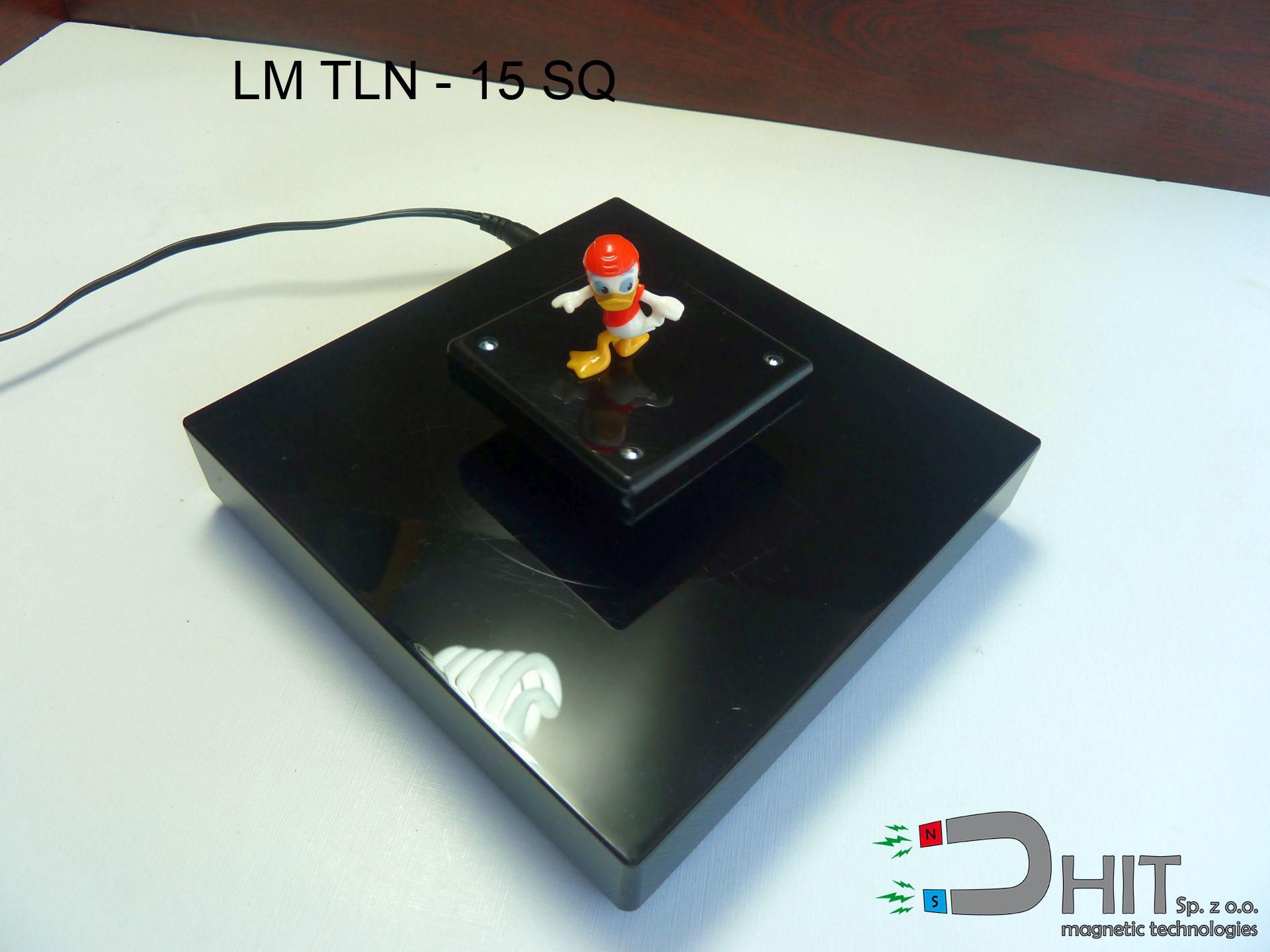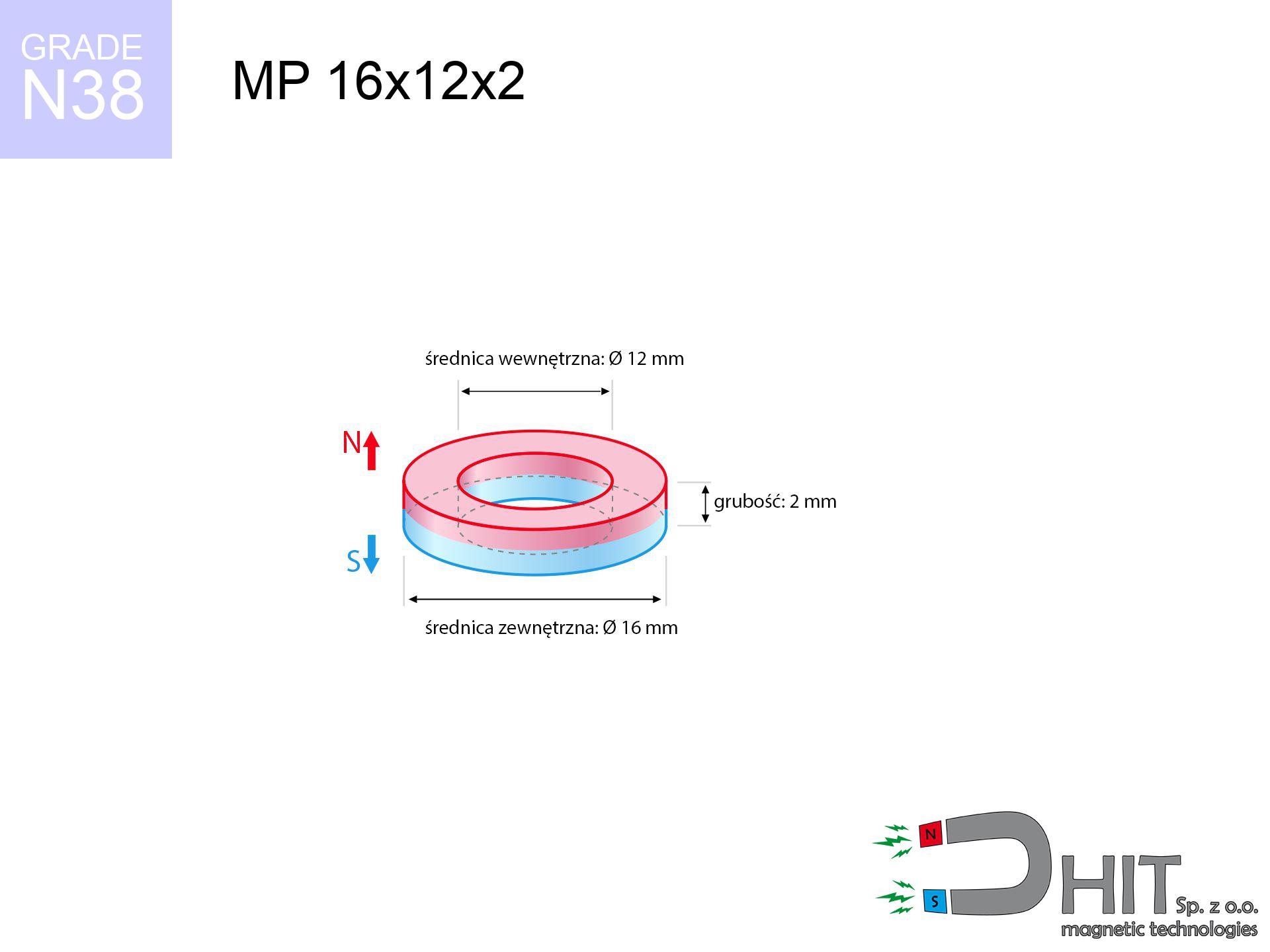MW 10x1.5 / N38 - cylindrical magnet
cylindrical magnet
Catalog no 010003
GTIN: 5906301810001
Diameter Ø [±0,1 mm]
10 mm
Height [±0,1 mm]
1.5 mm
Weight
0.88 g
Magnetization Direction
↑ axial
Load capacity
0.83 kg / 8.14 N
Magnetic Induction
178.06 mT
Coating
[NiCuNi] nickel
0.431 ZŁ with VAT / pcs + price for transport
0.350 ZŁ net + 23% VAT / pcs
bulk discounts:
Need more?Hunting for a discount?
Pick up the phone and ask
+48 22 499 98 98
alternatively contact us by means of
our online form
the contact section.
Specifications along with structure of a magnet can be tested on our
power calculator.
Orders placed before 14:00 will be shipped the same business day.
Magnetic properties of material N38
Physical properties of sintered neodymium magnets Nd2Fe14B at 20°C
Shopping tips
Advantages and disadvantages of rare earth magnets.
Besides their magnetic performance, neodymium magnets are valued for these benefits:
- Their strength is maintained, and after around ten years it drops only by ~1% (theoretically),
- They maintain their magnetic properties even under close interference source,
- By covering with a smooth coating of silver, the element acquires an elegant look,
- Magnetic induction on the surface of the magnet remains strong,
- Made from properly selected components, these magnets show impressive resistance to high heat, enabling them to function (depending on their form) at temperatures up to 230°C and above...
- Possibility of individual machining as well as optimizing to precise conditions,
- Fundamental importance in electronics industry – they are used in computer drives, motor assemblies, medical equipment, also complex engineering applications.
- Compactness – despite small sizes they provide effective action, making them ideal for precision applications
Disadvantages of neodymium magnets:
- They are fragile upon too strong impacts. To avoid cracks, it is worth securing magnets in a protective case. Such protection not only shields the magnet but also improves its resistance to damage
- NdFeB magnets demagnetize when exposed to high temperatures. After reaching 80°C, many of them experience permanent drop of power (a factor is the shape and dimensions of the magnet). We offer magnets specially adapted to work at temperatures up to 230°C marked [AH], which are extremely resistant to heat
- When exposed to humidity, magnets start to rust. For applications outside, it is recommended to use protective magnets, such as magnets in rubber or plastics, which secure oxidation and corrosion.
- Due to limitations in producing nuts and complex shapes in magnets, we propose using cover - magnetic mechanism.
- Potential hazard resulting from small fragments of magnets pose a threat, in case of ingestion, which becomes key in the context of child safety. Furthermore, tiny parts of these magnets are able to be problematic in diagnostics medical after entering the body.
- Higher cost of purchase is a significant factor to consider compared to ceramic magnets, especially in budget applications
Maximum holding power of the magnet – what it depends on?
The load parameter shown concerns the maximum value, obtained under ideal test conditions, namely:
- on a block made of mild steel, effectively closing the magnetic flux
- possessing a thickness of minimum 10 mm to avoid saturation
- with a surface free of scratches
- without the slightest insulating layer between the magnet and steel
- under vertical force direction (90-degree angle)
- at conditions approx. 20°C
Practical lifting capacity: influencing factors
Effective lifting capacity is influenced by specific conditions, such as (from priority):
- Gap between surfaces – even a fraction of a millimeter of distance (caused e.g. by veneer or dirt) drastically reduces the pulling force, often by half at just 0.5 mm.
- Loading method – catalog parameter refers to detachment vertically. When slipping, the magnet exhibits significantly lower power (typically approx. 20-30% of maximum force).
- Substrate thickness – to utilize 100% power, the steel must be adequately massive. Thin sheet limits the attraction force (the magnet "punches through" it).
- Material composition – not every steel attracts identically. High carbon content weaken the interaction with the magnet.
- Surface structure – the smoother and more polished the surface, the larger the contact zone and stronger the hold. Unevenness creates an air distance.
- Temperature influence – hot environment reduces magnetic field. Exceeding the limit temperature can permanently damage the magnet.
* Holding force was checked on the plate surface of 20 mm thickness, when the force acted perpendicularly, however under shearing force the holding force is lower. Additionally, even a slight gap {between} the magnet’s surface and the plate lowers the holding force.
Safe handling of neodymium magnets
Pacemakers
For implant holders: Powerful magnets affect electronics. Keep at least 30 cm distance or request help to handle the magnets.
Thermal limits
Monitor thermal conditions. Heating the magnet to high heat will ruin its properties and strength.
Flammability
Mechanical processing of NdFeB material carries a risk of fire hazard. Magnetic powder reacts violently with oxygen and is difficult to extinguish.
Cards and drives
Avoid bringing magnets near a wallet, computer, or TV. The magnetism can irreversibly ruin these devices and wipe information from cards.
Danger to the youngest
Adult use only. Tiny parts can be swallowed, leading to serious injuries. Keep out of reach of children and animals.
Skin irritation risks
Certain individuals suffer from a sensitization to nickel, which is the typical protective layer for NdFeB magnets. Extended handling may cause a rash. It is best to use safety gloves.
Conscious usage
Before use, read the rules. Sudden snapping can destroy the magnet or injure your hand. Think ahead.
Crushing risk
Danger of trauma: The attraction force is so great that it can result in blood blisters, crushing, and even bone fractures. Use thick gloves.
Risk of cracking
Despite the nickel coating, the material is delicate and not impact-resistant. Do not hit, as the magnet may shatter into sharp, dangerous pieces.
Precision electronics
A powerful magnetic field negatively affects the functioning of compasses in phones and navigation systems. Keep magnets close to a device to avoid breaking the sensors.
Caution!
More info about hazards in the article: Magnet Safety Guide.





![AM ucho [M10] - magnetic accessories AM ucho [M10] - magnetic accessories](https://cdn3.dhit.pl/graphics/products/am-ucho-m10-tij.jpg)



